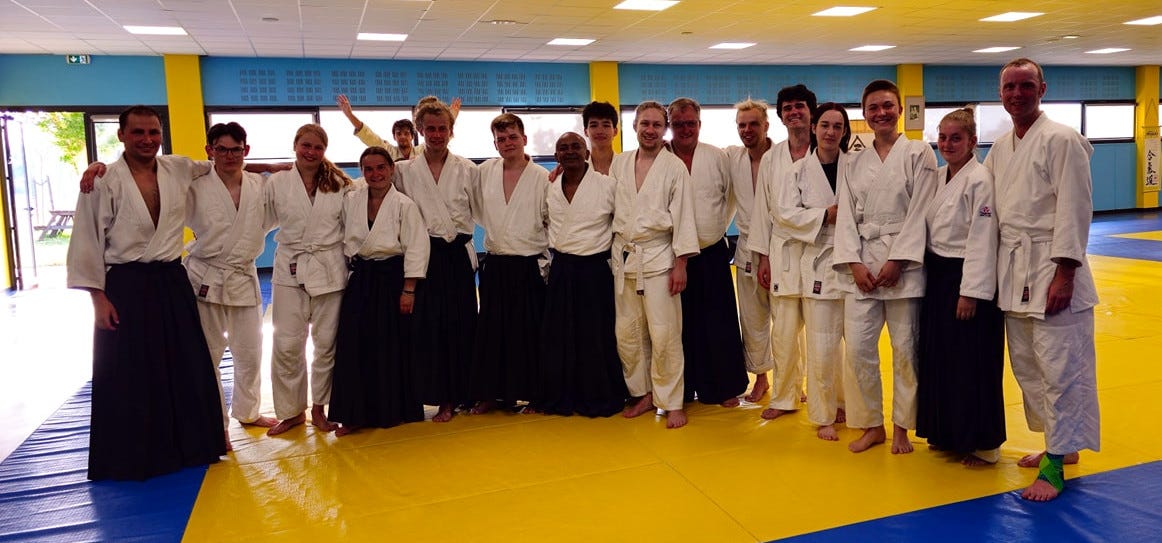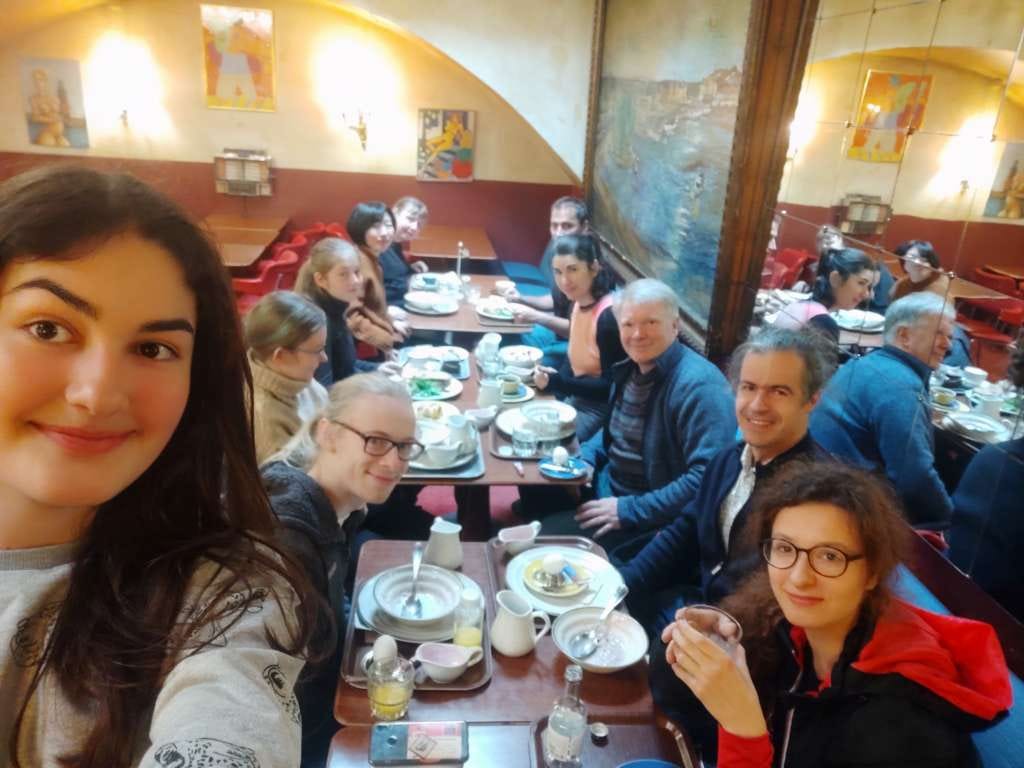How to Keep Youth in Aikido
Respect and Patience: The Basics for Keeping Teens Engaged
In the last decade or two, we can see just few young people in Aikido, while the current Aikido population is getting older and older. When you look at photos from seminars and dojos, the majority of people on them are in their forties, sometimes in their sixties.
Generally, no youngsters in Aikido.
For a long time, I couldn’t quite put my finger on it; in our dojo, we’re lucky enough to have a lot of inspiring young people practicing. However, we recently attended an Aikido summer school and I had an eye-opening moment there. I think that now I can tell you what to do if you want to drive away teenagers from your dojo. And maybe, I’ve got an idea how to keep more teenagers in Aikido, too. But first let me tell you the story.
A few weeks ago, we loaded our keikogis and sleeping bags into several minivans and took a long road trip from Prague, Czechia, to the Atlantic coast. We quite often travel this way, thousands of kilometers across Europe - to France, Sweden, Slovakia or Germany. This time, we were around twenty people and half of our group were teenagers and university students. The journey is a great adventure for them: to practice twice a day for two weeks, meet new people, taste some new food and different culture. It’s also nice for everybody on tatami to practice with youngsters. Aikido community is so friendly and welcoming to visitors!
So, we got to this seminar, we joined keiko, we enjoyed days passing in practice and sunbathing. Just during one training, the teacher shows a technique and there are these two girls who are sitting next to each other prepared to practice together. Then a man approaches them, takes one by hand and leads her to a partner she doesn’t know and then tells the other that he would practice with her.
If you don’t understand the previous sentence, don’t worry. When I heard about it, I didn’t understand either - I haven’t seen anything like that in 30 years of my Aikido practice. So I’ll write it in other words: a man has chosen a partner for a surprised teenage girl without asking her and took her to the selected partner. Does it make sense now?
Well, he probably wanted her to practice with different people. But whatever good intention was behind it, the attitude makes no sense to me. Would he do it to a male aikidoka who is older and more experienced? For any good reason?
Obviously, there are still men who think they can decide what is best for young women.
Believe me, those two young ladies were not happy with such a disrespect and when they told me about the experience later, I was quite upset, too. On the other hand, this moment made me understand something important. And I want to share it with you. It won’t be about this story but rather about the mindset that it reveals.
Things like this happen to us from time to time. Someone sees our youngsters and approaches them, me or other teachers from our dojo with a well-meant piece of advice. Fairly often I can hear something like “You know, those young students of yours, they should develop a stronger center.” or “Those youngsters, they should be on tatami much earlier before the beginning of a class. Five minutes is not enough.” or “They should practice more with others, they practice with each other far too often.”
Well, I agree that young people should eventually have a stronger center. However, in my opinion, it’s not a priority for teenagers while their bodies and brains are changing. Developing basic coordination of limbs and a vertical body posture is more useful for them at this point in their life.
And yes, it’s a good idea to frequently change partners and try to practice with new people. In my opinion, it’s one of the main things in Aikido. But teenagers can feel shy and insecure with a lot of strangers, especially in a new environment. They naturally tend to find safety within their group. It takes a while till they find the courage to step out of their comfort zone and meet new people.
I’m sure that these comments are made with good intentions, though sometimes they just go a bit too far. Just as the man from the story above went.
From my experience, it can be done better.
In our dojo, teenagers have so much fun with Aikido that they usually stay with us for a long time and are willing to travel far from home to get some new experience. It’s a miracle for me!
And I’m sure that if they go on, they will become stronger, physically and socially. Step by step, year by year. The real growth needs time.
The main question is not how to make them stronger in Aikido practice. It will happen naturally, we’ve seen it before.
The main question is how to allow them to stay in the art long enough to become adults in it.
As I said, we have found a way to have young people on tatami in our dojo and they are staying and growing. When 7th dan shihans lead seminars at our place, they often mention it - because they travel around the world and know how exceptional it is.
And then there are these wise people now and then, advising us how to treat our young students. I usually listen to them politely. But I noticed over the time that they don’t bring to seminars any young students with strong centers who are on tatami 30 minutes before training. No, they don’t. Maybe because they don’t have young students.
Thinking of it, I had this awakening. Maybe those wise advisors don’t have young students because they treat young people in the same way they advise us.
Because they treat young people as if they were little kids.
Which, as you may suspect, usually doesn’t work with adolescents. Quite the contrary.
So, thanks to that well-meaning, unsolicited, and quite useless pieces of advice I realized an important secret we have in our dojo. Here it is:
We have a lot of young students in our dojo because we don’t preach to them what they should do and how they should do it. We don’t tell them how they should live their lives. We treat them like grown-up people, respect them for who they are.
That’s it.
I can imagine how crazy it can sound in Aikido and the martial arts world, where we sometimes believe that everybody should be told what to do. Almost like in the military, or at school. But honestly, teenagers are often fed up with their school and commanding teachers. So it might be a good idea not to command them also in Aikido. Of course, at the same time, we have to find a way to make Aikido interesting for young people - but that’s a topic for another article.
If you want to have some interesting young people growing and appreciating Aikido in your dojo, I’d recommend the following: instead of preaching and commanding them, treat them as adults. Be curious about them, ask them about their life, school, opinions… Listen to them, show interest. Let yourself be surprised, you might even learn something from them. Don’t be too clever and never patronize, you aren’t their father or mother. And then, maybe, they’ll feel respected in your dojo, stay and practice with you. If so, you can feel privileged to have a chance to watch them grow over the years.
It’s a marvelous experience, enjoy it!
PS: Everything I write above can be culturally conditioned. What works in Prague doesn’t have to be true for other cities or countries. It’s possible that in your culture there are obedient teenagers who long for someone to tell them what to do and want to become a uniform member of society. But even if that’s the case, maybe you can give them gentle approval to be more themselves in your dojo. So that, with your support and the help of Aikido, they can become strong and independent adults. I guess that’s one purpose of our art.



